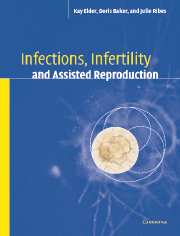Foreword
Published online by Cambridge University Press: 29 October 2009
Summary
Wolbachia are gram-negative, intracellular bacteria that shelter in the gonads of invertebrates, and have profound effects on the fertility of their hosts. In some species, infected hosts can only reproduce parthenogenetically, in others cytoplasmic incompatibility prevents infected males from breeding with uninfected females, and in some cases genetically determined male embryos are transformed into females. Wolbachia engineers effects, as do all parasites, for selfish ends. Although this bizarre pathology is unknown in medical science, the relationships between microbes and human fertility are nonetheless complex, fascinating and important for the practice of reproductive medicine.
Unfortunately, and usually without advance warning, microbes occasionally enter the clinical laboratory through infected semen or vaginal tissue. When this occurs, a patient's treatment outcome may be seriously compromised because microbes can quickly deplete nutrients in culture media and alter the pH, and it would be irresponsible to knowingly transfer an infected embryo or semen to a patient. Bacterial and fungal growth are often obvious and easily tested, but how often do infectious agents go unrecognized and contribute to the problems of infertility, treatment failure and even possibly affect the child-to-be?
This is the first book on medical microbiology that has been written by experts in reproduction for clinical scientists and physicians in their own field. They are to be congratulated on filling a gap in the literature between microbiology and assisted reproduction, which they achieve in three sections.
- Type
- Chapter
- Information
- Infections, Infertility, and Assisted Reproduction , pp. xi - xiiPublisher: Cambridge University PressPrint publication year: 2004



